Abstract
1. In unanaesthetized cats tranylcypromine (1-10 mg/kg) had scarcely any effect on rectal temperature when injected intraperitoneally, yet such injections prevented the deep and long-lasting fall in rectal temperature which normally occurs when the cat is anaesthetized by intraperitoneal pentobarbitone sodium or intravenous chloralose. The anaesthesia itself, however, was not affected. In some of the experiments with pentobarbitone sodium rectal temperature even rose to fever level.
2. In anaesthetized as well as in unanaesthetized cats injections of tranylcypromine (0·1-1 mg) into the cerebral ventricles caused a rise in rectal temperature.
3. In rabbits, rectal temperature was scarcely affected when surgical anaesthesia was produced by intravenous infusions of pentobarbitone sodium under the same condition in which, in cats, intraperitoneal pentobarbitone sodium produced a deep and long-lasting fall in temperature, i.e. when no external heat was applied but excessive dissipation of heat was prevented by placing the rabbit on a cotton-wool pad. However, when it was placed on the metal surface of an operating table, the anaesthesia was associated with a deep fall in rectal temperature.
5. In anaesthetized and unanaesthetized rabbits tranylcypromine had no effect on rectal temperature when injected intraperitoneally (10 mg/kg) or into the cerebral ventricles (1 mg).
5. These results are discussed in relation to the theory that the three monoamines in the hypothalamus, 5—hydroxytryptamine (5-HT), adrenaline and noradrenaline, act as central transmitters in temperature regulation.
Full text
PDF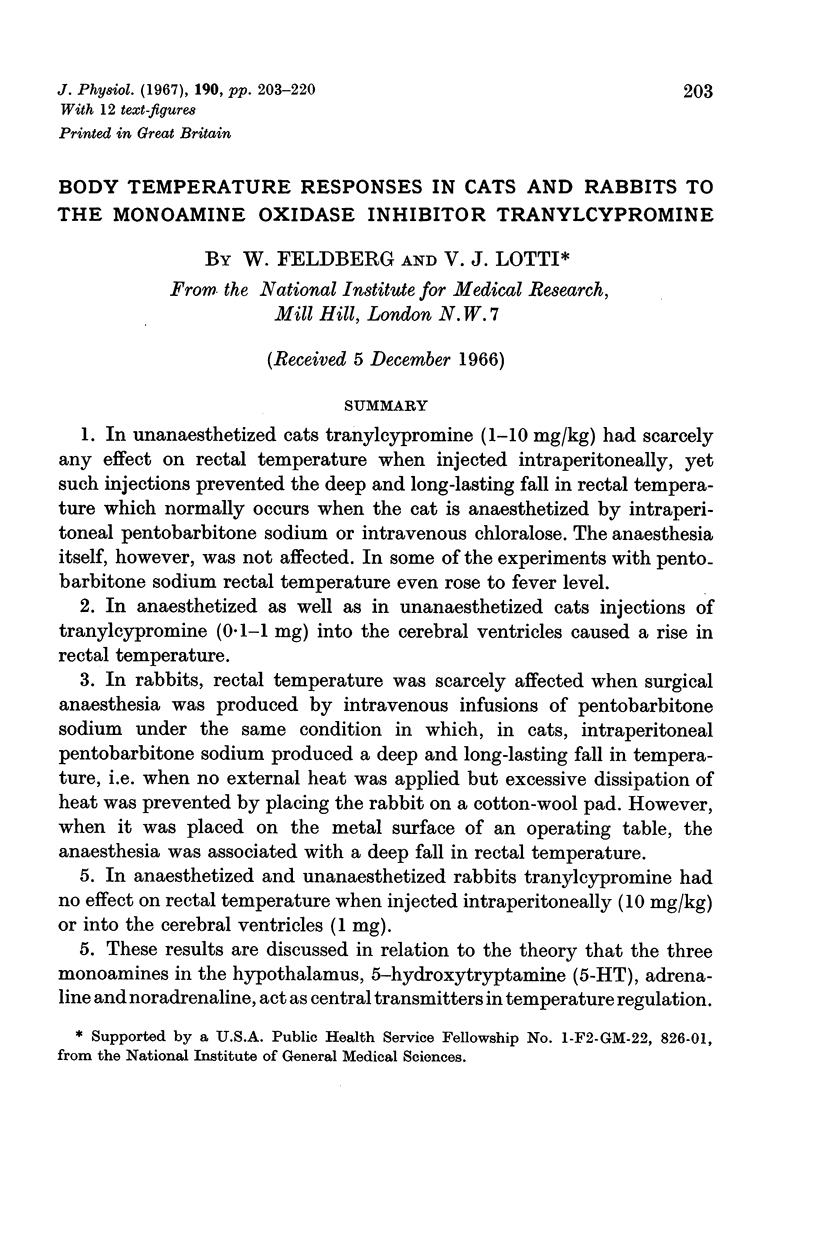
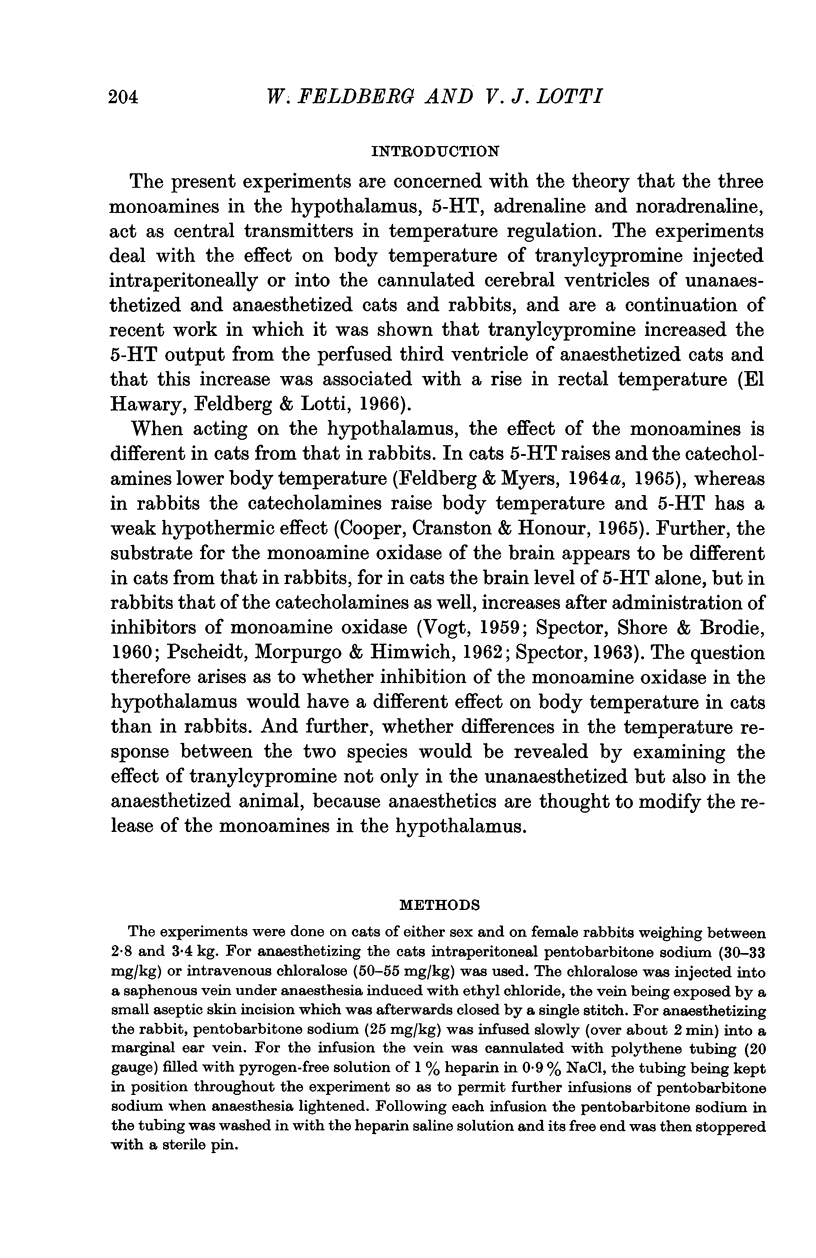
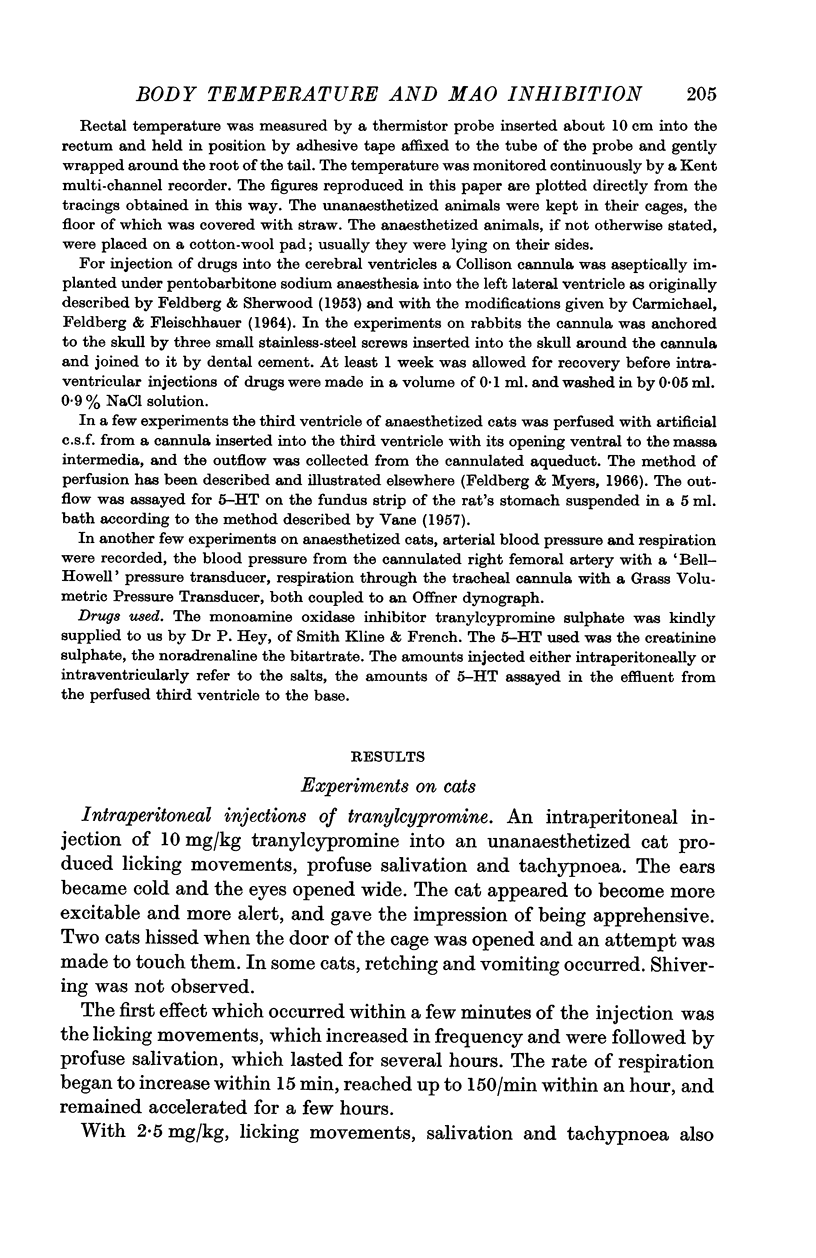
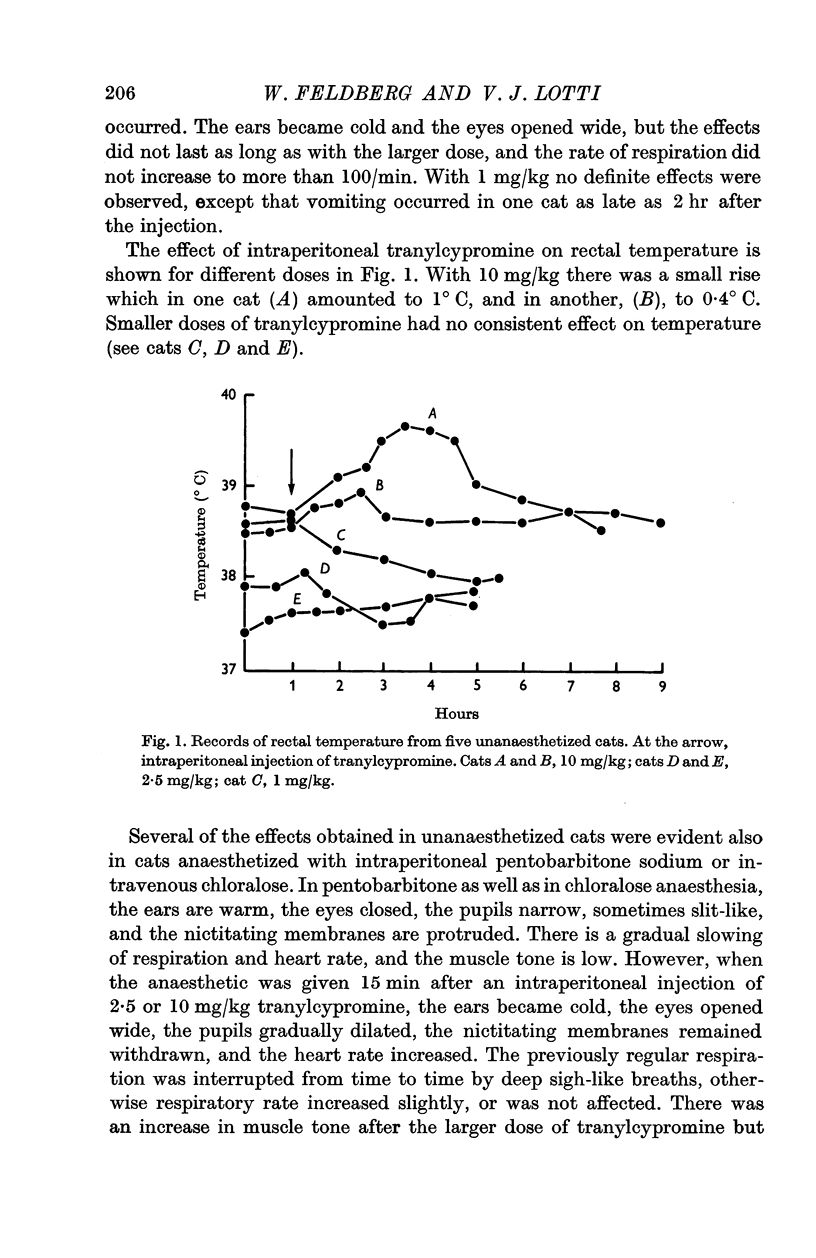

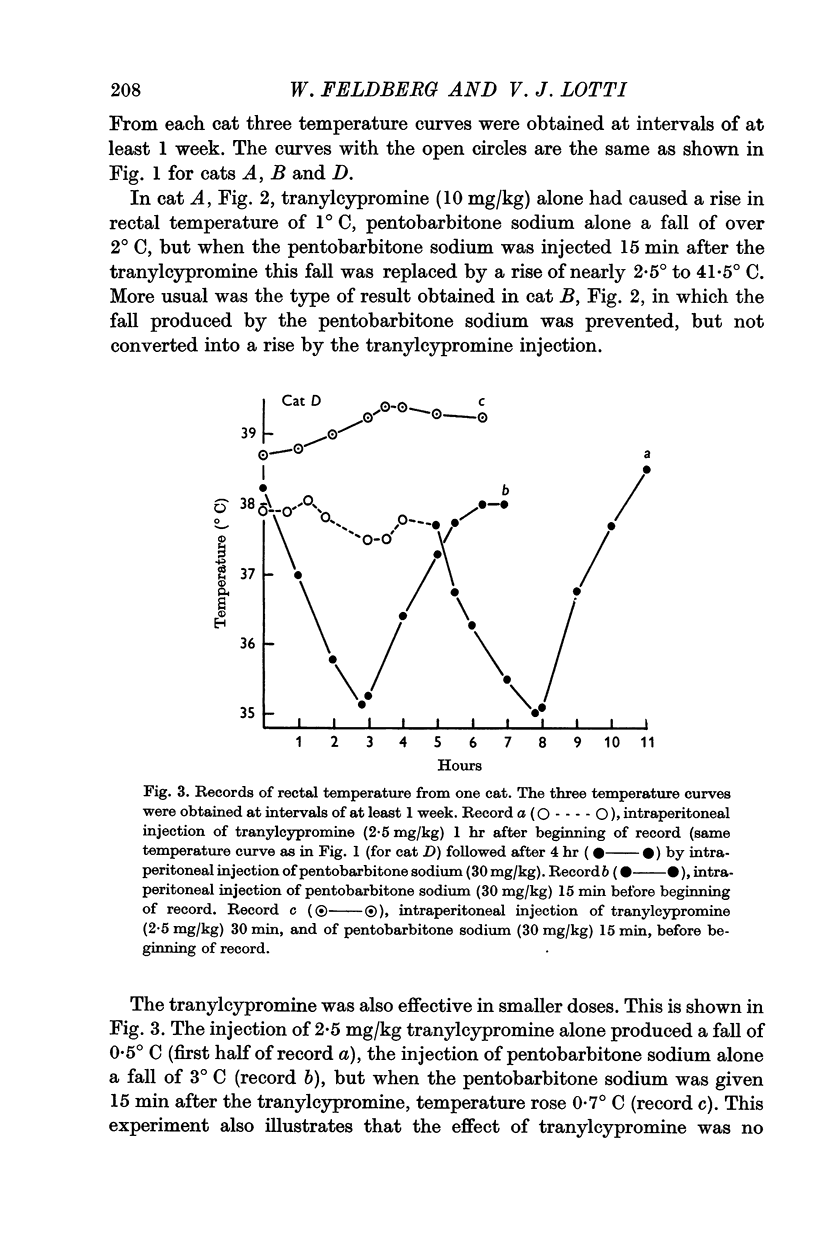
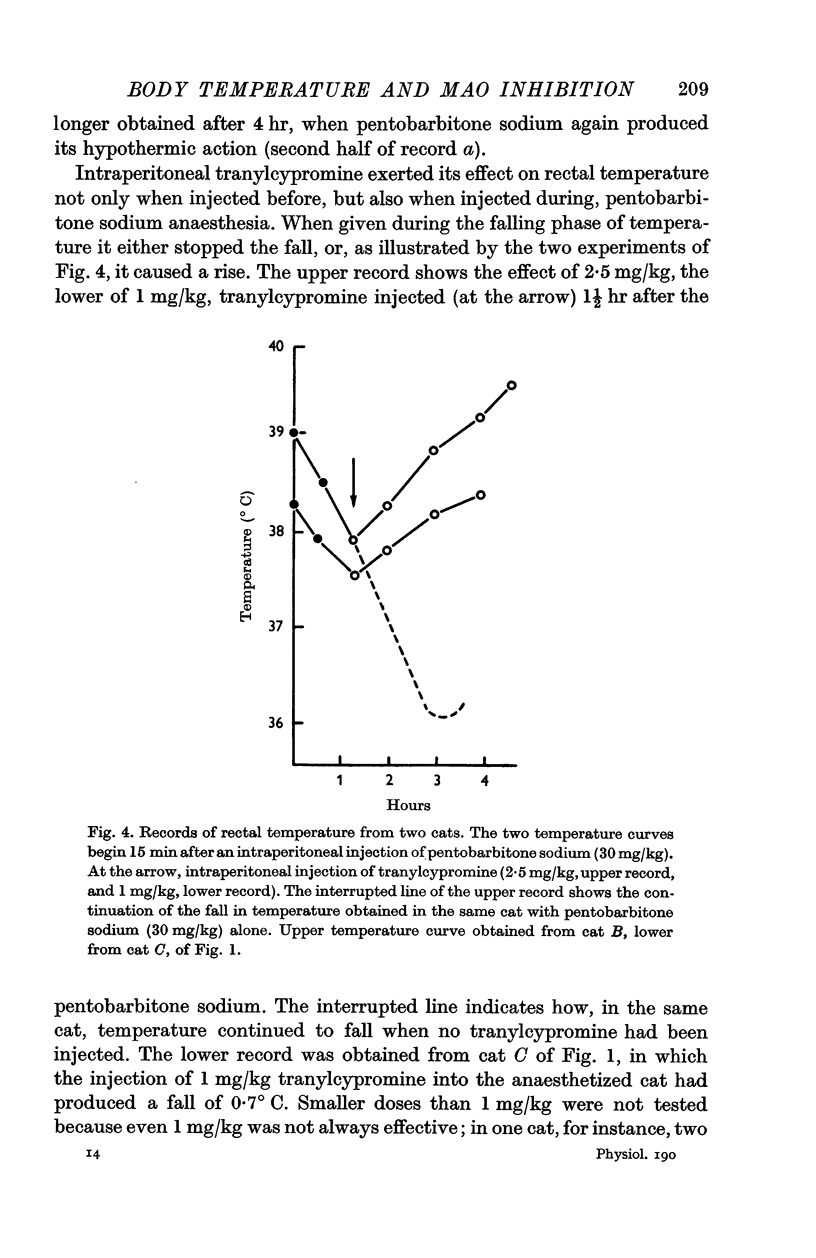
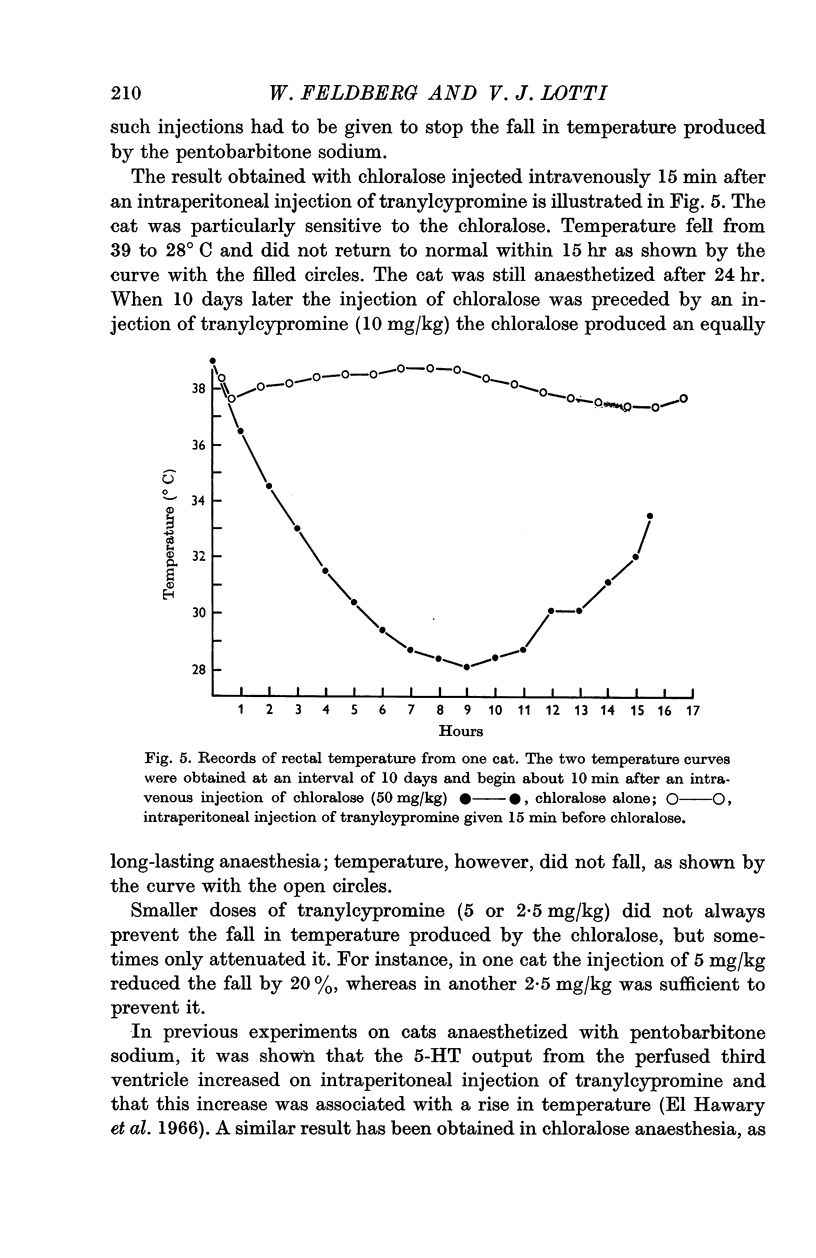
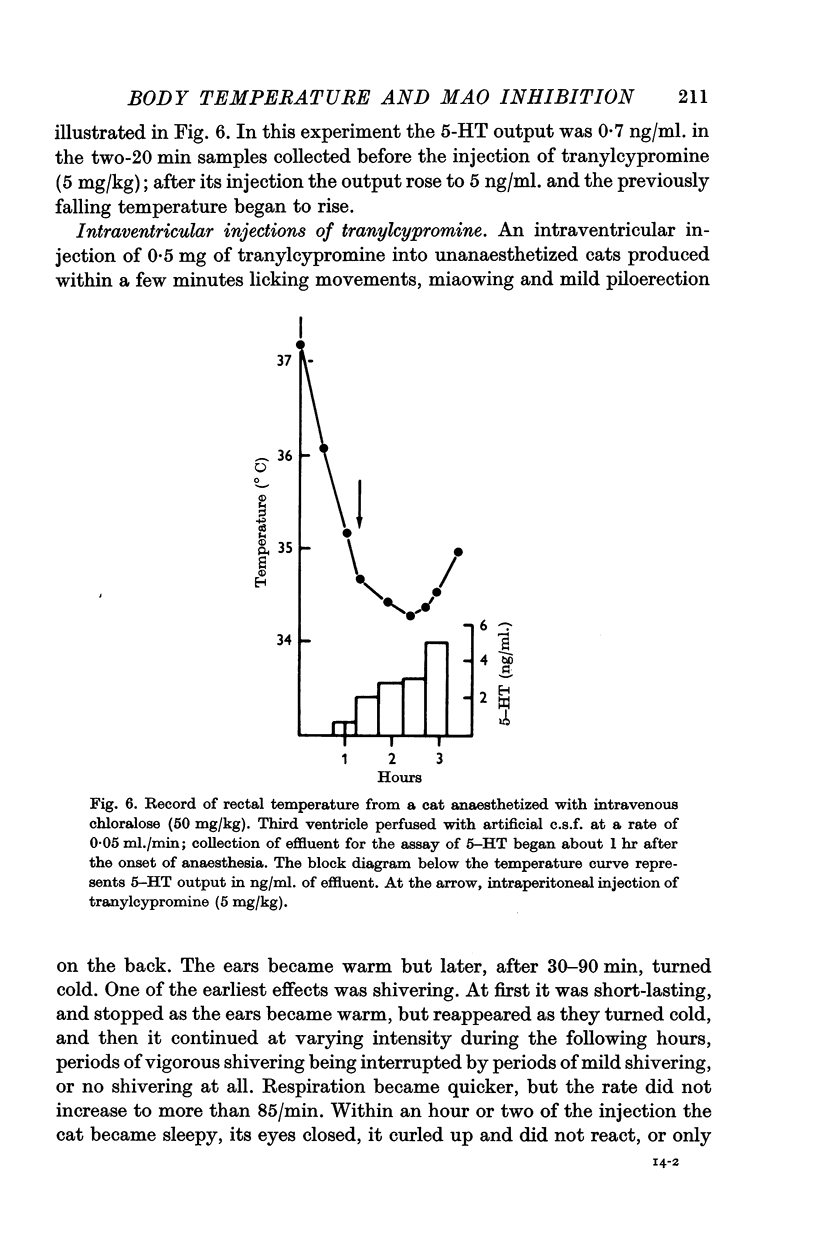

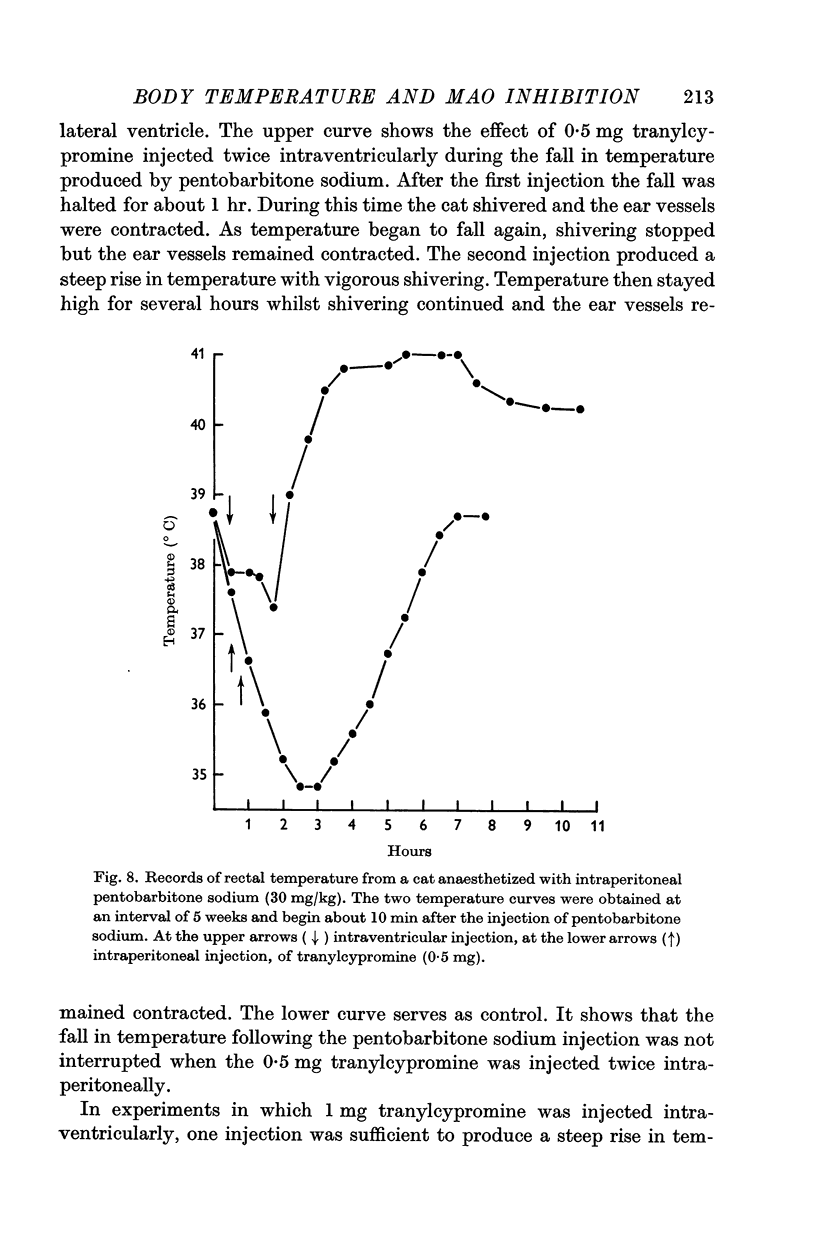
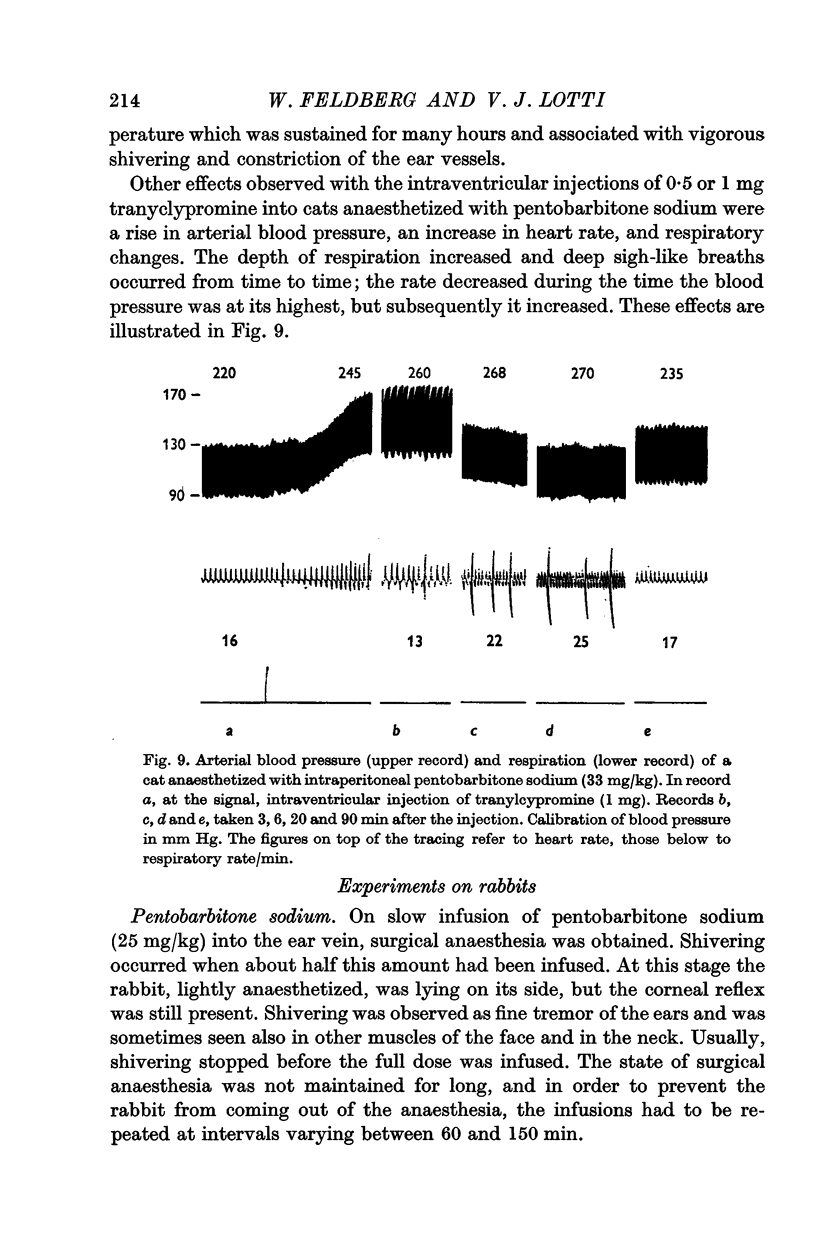
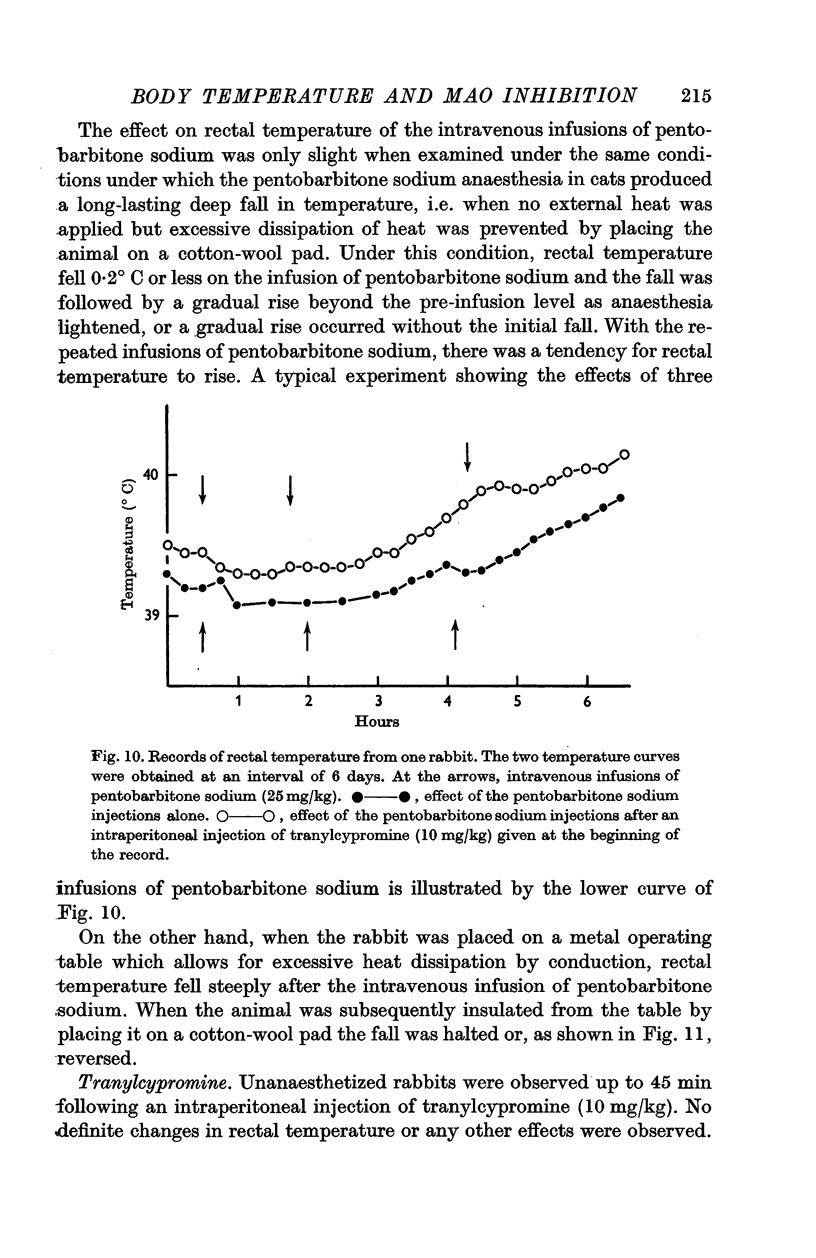
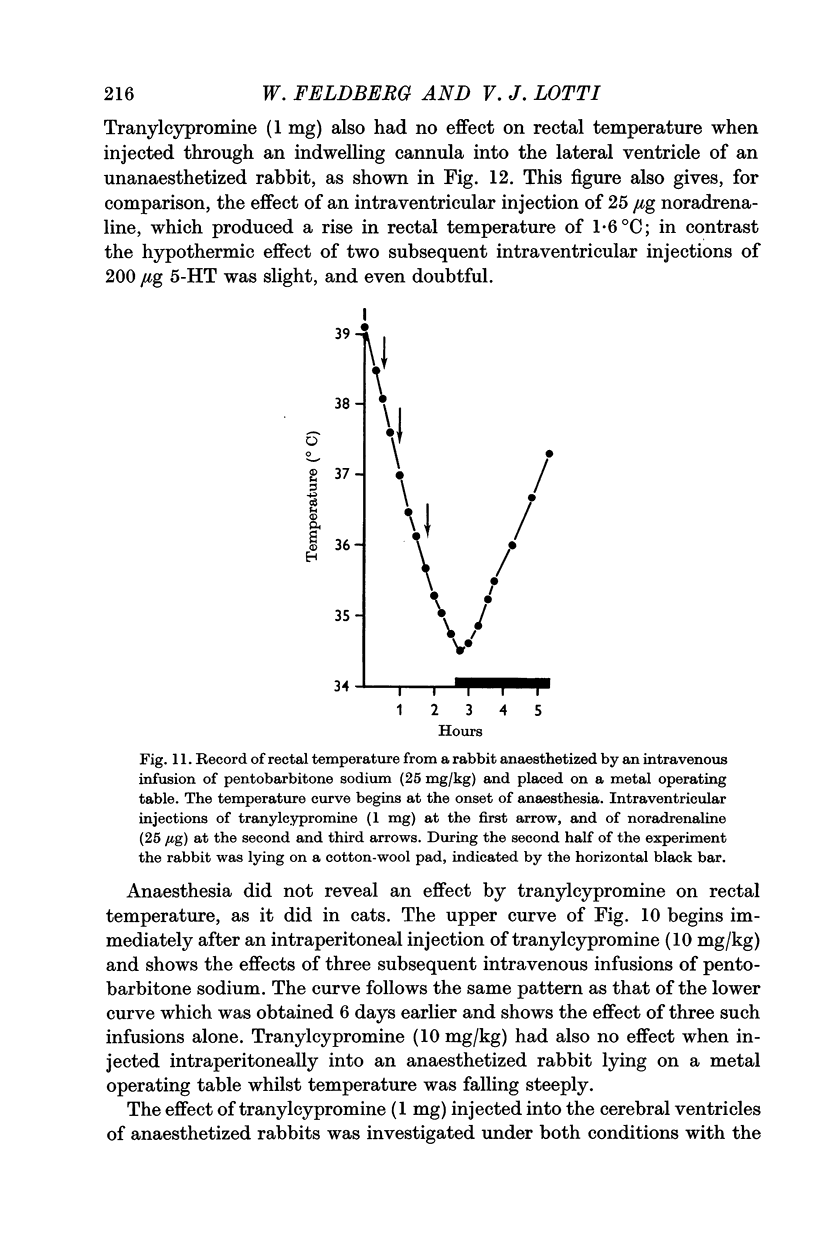

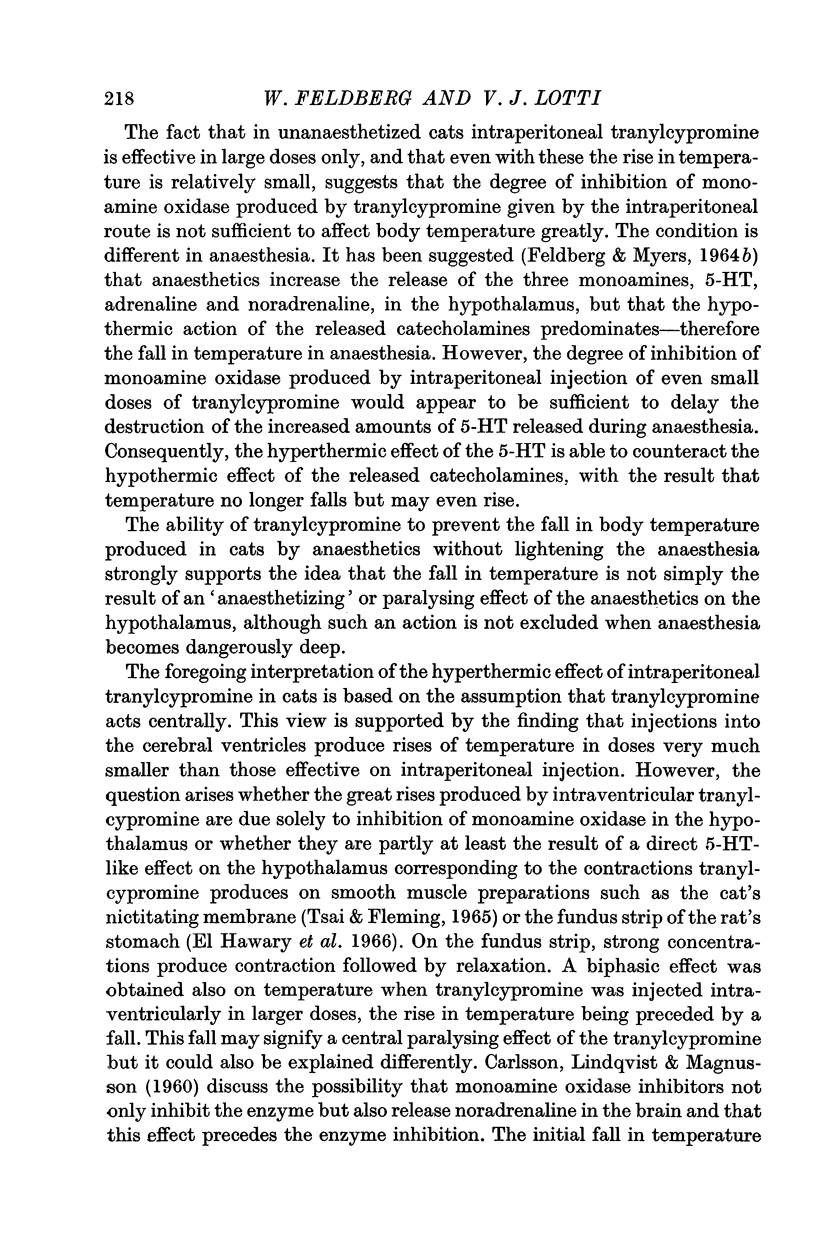

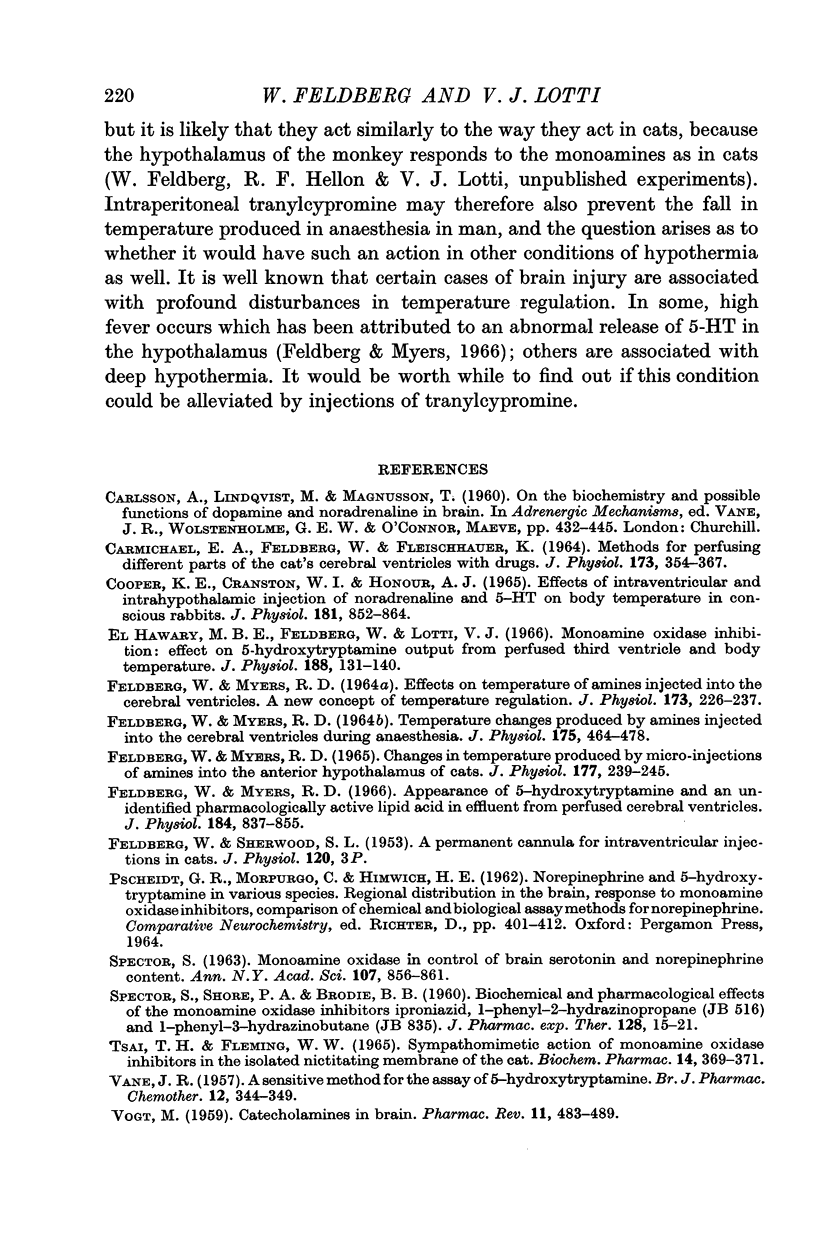
Selected References
These references are in PubMed. This may not be the complete list of references from this article.
- CARMICHAEL E. A., FELDBERG W., FLEISCHHAUER K. METHODS FOR PERFUSING DIFFERENT PARTS OF THE CAT'S CEREBRAL VENTRICLES WITH DRUGS. J Physiol. 1964 Oct;173:354–367. doi: 10.1113/jphysiol.1964.sp007461. [DOI] [PMC free article] [PubMed] [Google Scholar]
- Cooper K. E., Cranston W. I., Honour A. J. Effects of intraventricular and intrahypothalamic injection of noradrenaline and 5-HT on body temperature in conscious rabbits. J Physiol. 1965 Dec;181(4):852–864. doi: 10.1113/jphysiol.1965.sp007801. [DOI] [PMC free article] [PubMed] [Google Scholar]
- FELDBERG W., MYERS R. D. CHANGES IN TEMPERATURE PRODUCED BY MICRO-INJECTIONS OF AMINES INTO THE ANTERIOR HYPOTHALAMUS OF CATS. J Physiol. 1965 Mar;177:239–245. doi: 10.1113/jphysiol.1965.sp007589. [DOI] [PMC free article] [PubMed] [Google Scholar]
- FELDBERG W., MYERS R. D. EFFECTS ON TEMPERATURE OF AMINES INJECTED INTO THE CEREBRAL VENTRICLES. A NEW CONCEPT OF TEMPERATURE REGULATION. J Physiol. 1964 Sep;173:226–231. doi: 10.1113/jphysiol.1964.sp007454. [DOI] [PMC free article] [PubMed] [Google Scholar]
- FELDBERG W., MYERS R. D. TEMPERATURE CHANGES PRODUCED BY AMINES INJECTED INTO THE CEREBRAL VENTRICLES DURING ANAESTHESIA. J Physiol. 1964 Dec;175:464–478. doi: 10.1113/jphysiol.1964.sp007527. [DOI] [PMC free article] [PubMed] [Google Scholar]
- FELDBERG W., SHERWOOD S. L. A permanent cannula for intraventricular injections in cats. J Physiol. 1953 Apr 28;120(1-2):3P–5P. [PubMed] [Google Scholar]
- Feldberg W., Myers R. D. Appearance of 5-hydroxytryptamine and an unidentified pharmacologically active lipid acid in effluent from perfused cerebral ventricles. J Physiol. 1966 Jun;184(4):837–855. doi: 10.1113/jphysiol.1966.sp007951. [DOI] [PMC free article] [PubMed] [Google Scholar]
- SPECTOR S. Monoamine oxidase in control of brain serotonin and norepinephrine content. Ann N Y Acad Sci. 1963 Jul 8;107:856–864. doi: 10.1111/j.1749-6632.1963.tb13329.x. [DOI] [PubMed] [Google Scholar]
- SPECTOR S., SHORE P. A., BRODIE B. B. Biochemical and pharmacological effects of the monoamine oxidase inhibitors, iproniazid, 1-phenyl-2-hydrazinopropane (JB 516) and 1-phenyl-3-hydrazinobutane (JB 835). J Pharmacol Exp Ther. 1960 Jan;128:15–21. [PubMed] [Google Scholar]
- TSAI T. H., FLEMING W. W. SYMPATHOMIMETIC ACTIONS OF MONOAMINE OXIDASE INHIBITORS IN THE ISOLATING NICITATING MEMBRANE OF THE CAT. Biochem Pharmacol. 1965 Mar;14:369–371. doi: 10.1016/0006-2952(65)90207-8. [DOI] [PubMed] [Google Scholar]
- VANE J. R. A sensitive method for the assay of 5-hydroxytryptamine. Br J Pharmacol Chemother. 1957 Sep;12(3):344–349. doi: 10.1111/j.1476-5381.1957.tb00146.x. [DOI] [PMC free article] [PubMed] [Google Scholar]
- VOGT M. Catecholamines in brain. Pharmacol Rev. 1959 Jun;11(2 Pt 2):483–489. [PubMed] [Google Scholar]
- el Hawary M. B., Feldberg W., Lotti V. J. Monoamine oxidase inhibition: effect on 5-hydroxytryptamine output from perfused third ventricle and body temperature. J Physiol. 1967 Jan;188(1):131–140. doi: 10.1113/jphysiol.1967.sp008129. [DOI] [PMC free article] [PubMed] [Google Scholar]


